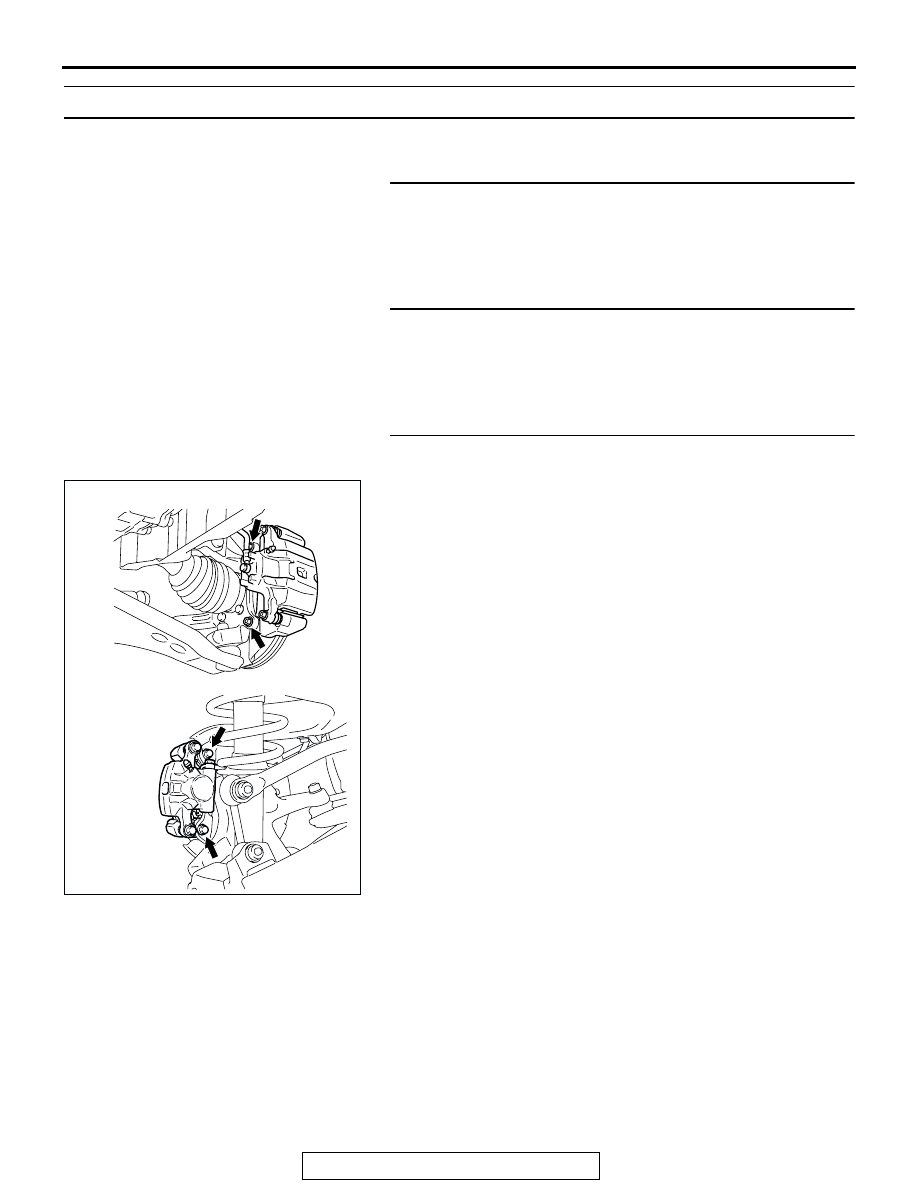Mitsubishi Galant (2004+). Manual - part 506

BASIC BRAKE SYSTEM DIAGNOSIS
TSB Revision
BASIC BRAKE SYSTEM
35A-11
INSPECTION PROCEDURE 8: Groaning, Clicking or Rattling Noise when Brakes are not Applied.
DIAGNOSIS
.
STEP 1. Check whether foreign material has entered the
wheel covers.
Q: Is there any foreign material?
YES : Remove it. Then go to Step 5.
NO : Go to Step 2.
STEP 2. Check for looseness of the wheel nuts.
Q: Are the wheel nuts loose?
YES : Tighten to 98
± 10 N⋅m (73 ± 7 ft-lb). Then go to Step
5 .
NO : Go to Step 3.
STEP 3. Check for looseness of the caliper installation
bolt.
Q: Is the caliper installation bolt loose?
YES : Tighten to 100
± 10 N⋅m (74 ± 7 ft-lb) for the front
caliper. Tighten to 60
± 5 N⋅m (45 ± 3 ft-lb) for the rear
caliper. Then go to Step 5.
NO : Go to Step 4.
AC308605AB
<FRONT>
<REAR>